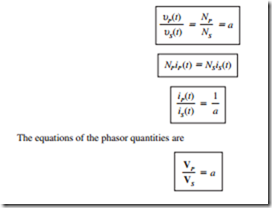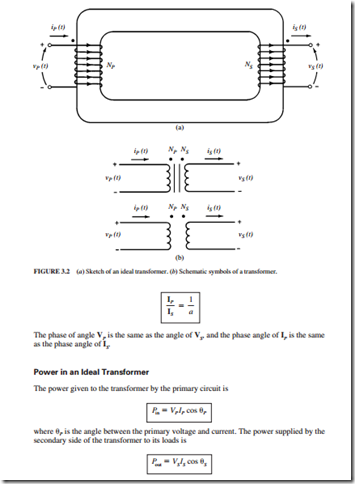THE IDEAL TRANSFORMER
An ideal transformer does not have any losses (Fig. 3.2). The voltages and currents are related by these equations:
Related posts:
The Essentials of Computer Organization and Architecture - Data Representation in Computer Systems
THE VOLTAGE REGULATOR
SQUIRREL-CAGE MOTOR TROUBLE CHART
Wiring Methods for Lighting Circuits:Protection Against Direct Contact
Timed Starting for Three Motors ( Circuit #2)
ELECTRONIC CONCEPTS AND MORE INTERESTING THAN YOU THINK:ELECTRICITY AND ELECTRONICS
INDUCTION MACHINE TRANSIENTS
Field effect transistors (Fets):TESTING FETs
The Compensating Winding
Single-phase motors:Repulsion Type Motors
POWER ELECTRONIC CONVERTERS FOR MOTOR DRIVES:D.C. FROM A.C. – CONTROLLED RECTIFICATION
Electronic Start Switch
Control of Motor Starting part2
Transformer:Equivalent Circuit and Transformer Tests


